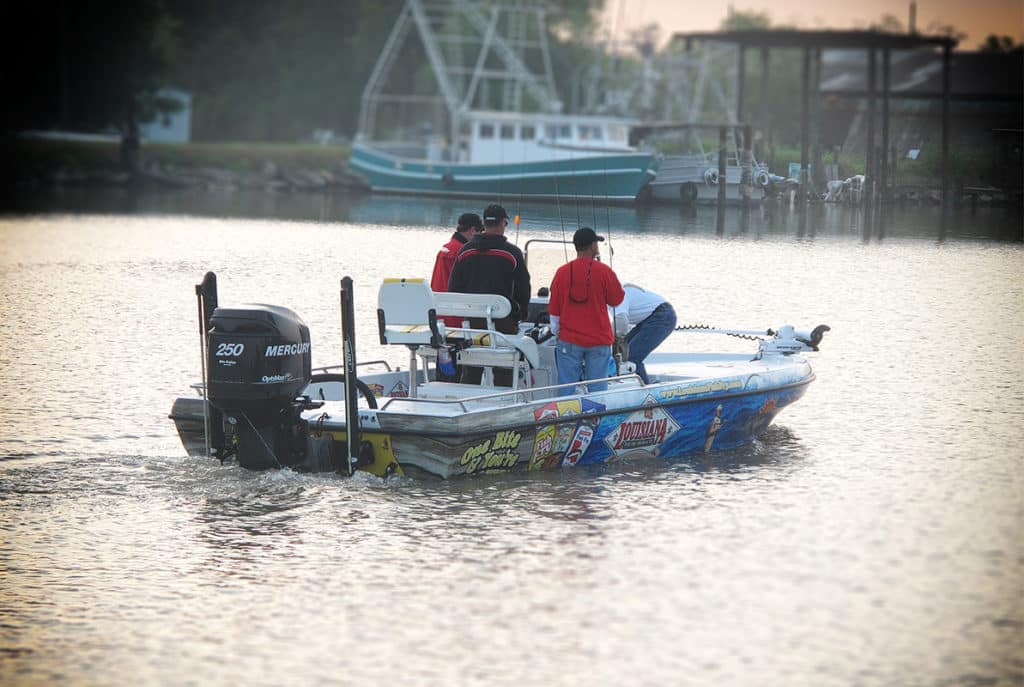
In shallow inshore depths where noise and -pressure waves alert wary fish, the ability to quietly hold a boat in position is paramount. Dropping a conventional anchor overboard is impractical, time-consuming and loud. A push pole or manual stake-off pin is difficult to use if the bottom is shell, hard sand or rock. Hydraulic or electric/mechanical shallow-water anchor systems are a viable alternative. With rapid remote-control deployment, plus multiple size and mounting options, these systems have quickly become standard equipment for inshore enthusiasts. We asked two professional guides to share the ways they use theirs while running charters.
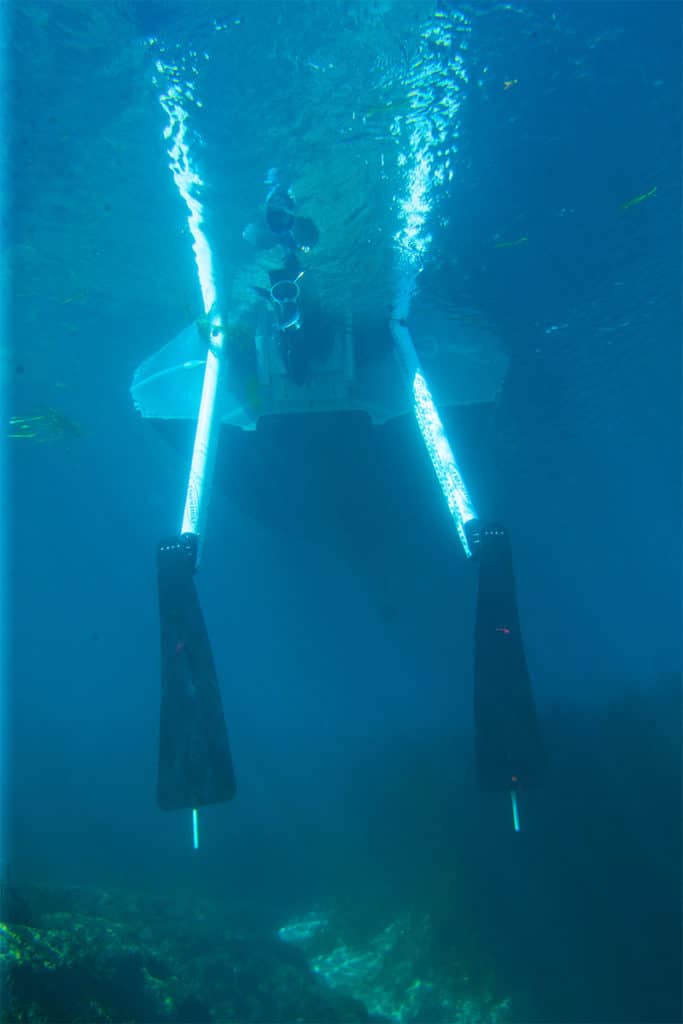
“Down here with our gumbo mud, the spikes alone will sometimes drag,” he says. “The drift paddles act like shovels in the mud. They stop you cold. There’s still 5 inches of spike sticking out beyond the paddles, so the system is more versatile. Power-Pole built their own better mousetrap. Adding them is a definite benefit with the type of bottom we find in the marsh.” Power-Pole drift paddles adjust quickly to compensate for wind and current. The paddle angle rotates to act as a rudder in a light breeze. Another option, the smartphone app, allows fine-tuning of the C-Monster wireless controls and trouble-shooting diagnostics.
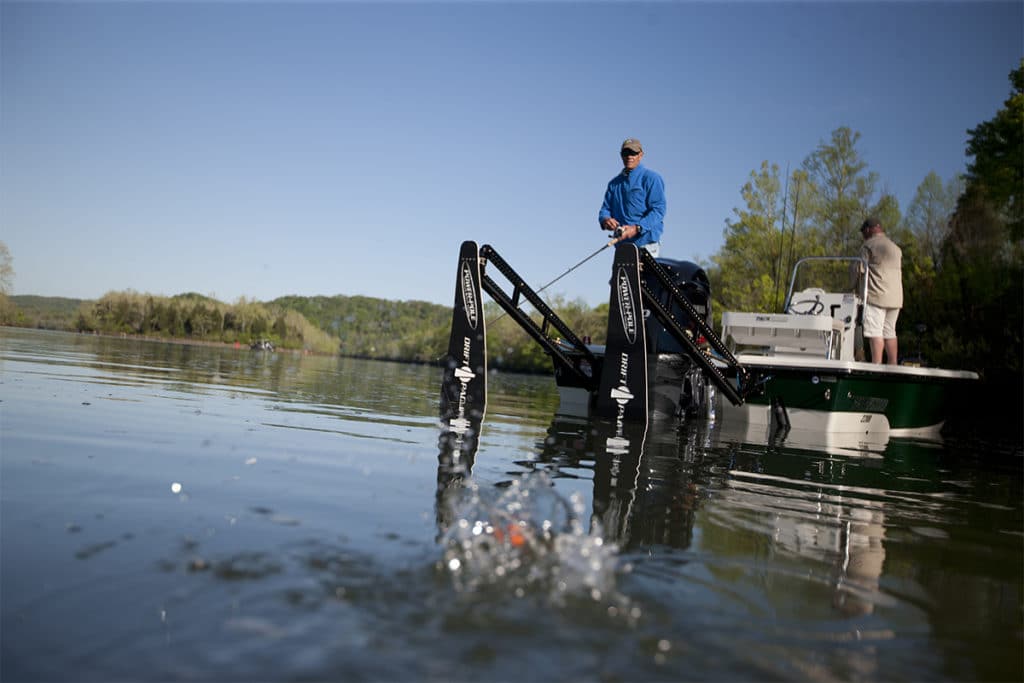
“When we hook a fish, I Power-Pole down immediately and then shut off the trolling motor remotely,” Bourgeois explains. “I want to stop as fast as I can. The dual anchors hold the boat exactly in position without pivoting in the wind and current, so everyone onboard has a fair shot at casting to points, shorelines or cuts. I like to stay put until the fish play out. We’ll fan cast the area and catch a few more before moving on.”
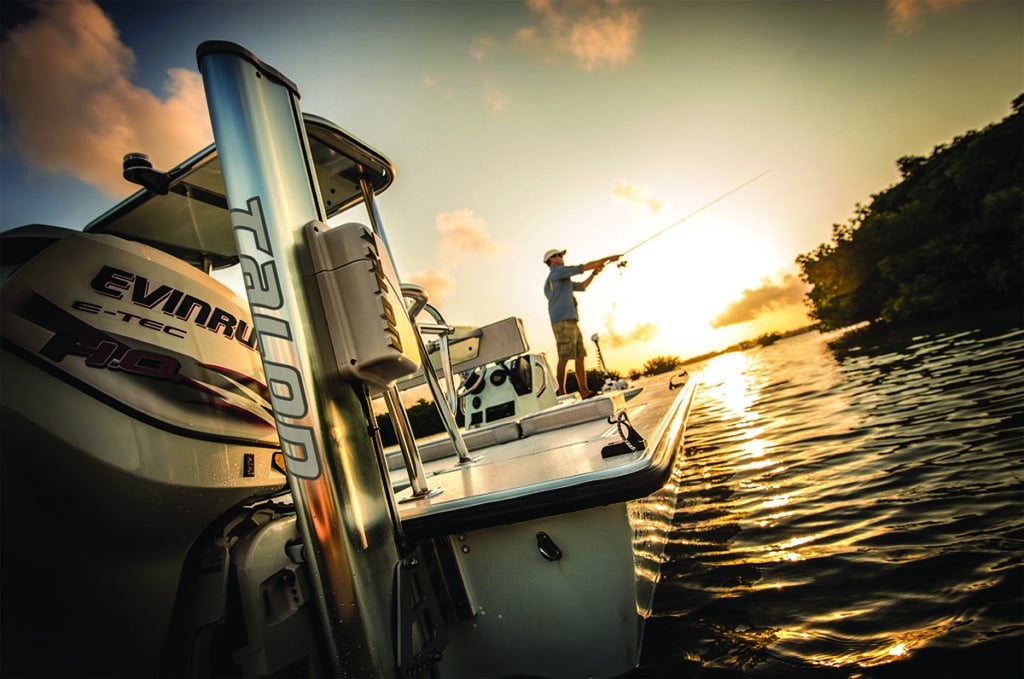
Stealth Mode
Capt. Tom Van Horn uses a 6-foot Minn Kota Talon mounted to the stern of his 18 Maverick Master Angler skiff when targeting skittish redfish, trout and black drum in Florida’s Indian River and Mosquito Lagoon. With increasing pressure, the area’s fish populations spook easily, so Van Horn is cautious. He approaches a flat by poling forward a boat length and then uses the Talon to hold position and allow his anglers to cast. He remains atop the poling platform and deploys the anchor with the control fob around his neck. “I usually pole with the wind in depths that average 2 feet,” he explains. “I typically fish three clients, so I might have as much as 1,000 pounds in the boat. That weight helps keep the bow down, so when I set the Talon, the boat doesn’t swing.”
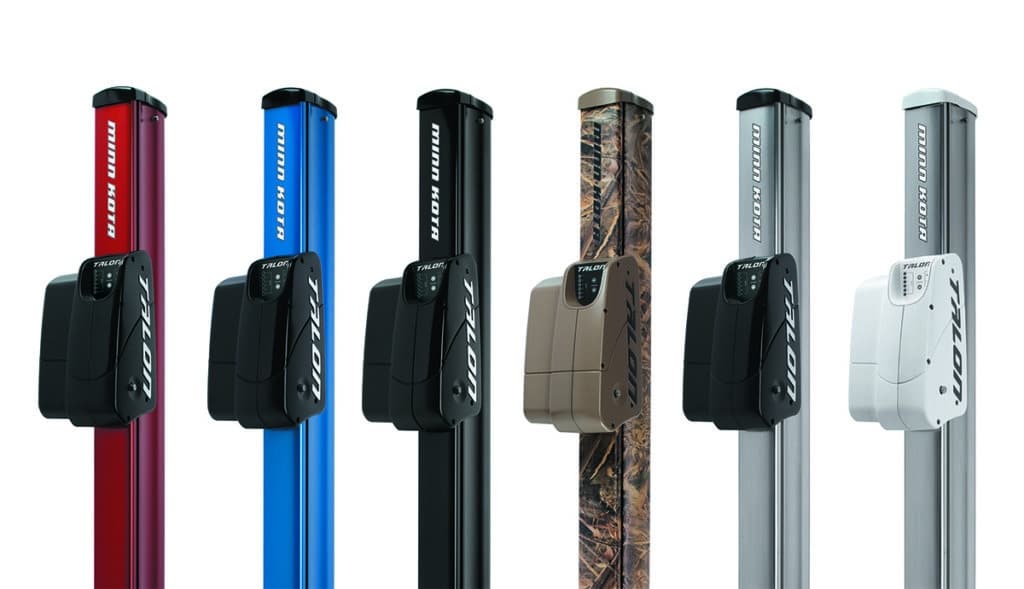
Just as valuable is the ability to instantly stop the boat in place without hesitation. “As soon as a client hooks a fish, I drop the Talon,” says Van Horn. “If I see something, I drop it. It deploys within seconds and doesn’t spook the fish. The biggest advantage is it keeps me from floating too close. It’s a valuable tool.”
The electro-mechanical anchor also comes in handy at the dock. Van Horn ties a line off the bow and puts the Talon down to hold parallel to the dock so passengers can safely disembark.
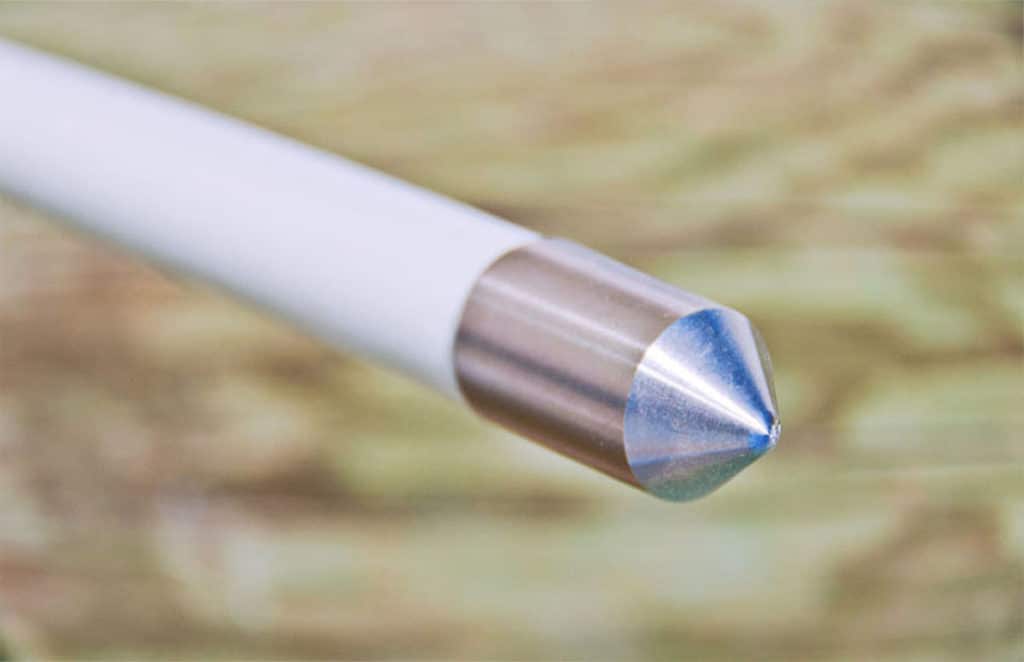
Spike Saver
Protect the anchor spike by adding the factory wrap (Power-Pole; power-pole.com) or a piece of heat-shrink tubing. Wang offers an optional stainless-steel tip for its stake-out poles (wanganchor.com) that fits Power-Pole and Talon spikes too. All shield the spike to minimize splintering caused by shell and rock bottom.
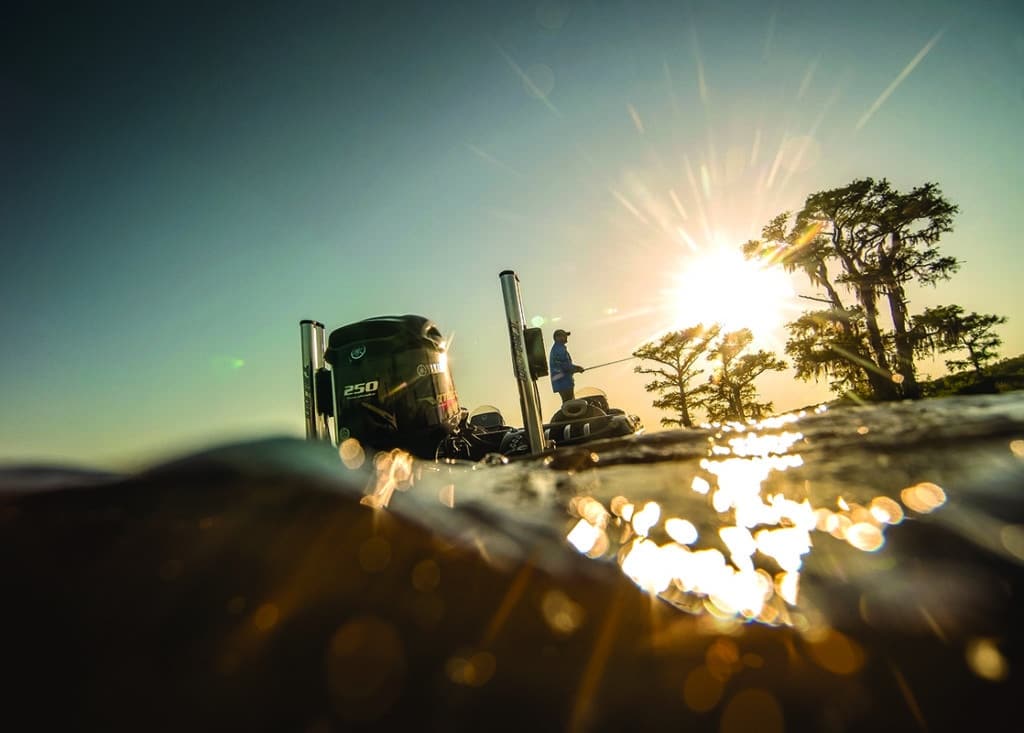
Both hydraulic and electric/mechanical systems offer trouble-free operation, but still require routine maintenance. Flush the units with fresh water and inspect cables, pumps and spikes periodically. Van Horn sprays INOX lubricant down his Talon’s flush hole every couple of months to ensure quiet operation. “Anything in salt; neglect it and you’ll regret it,” he says.









